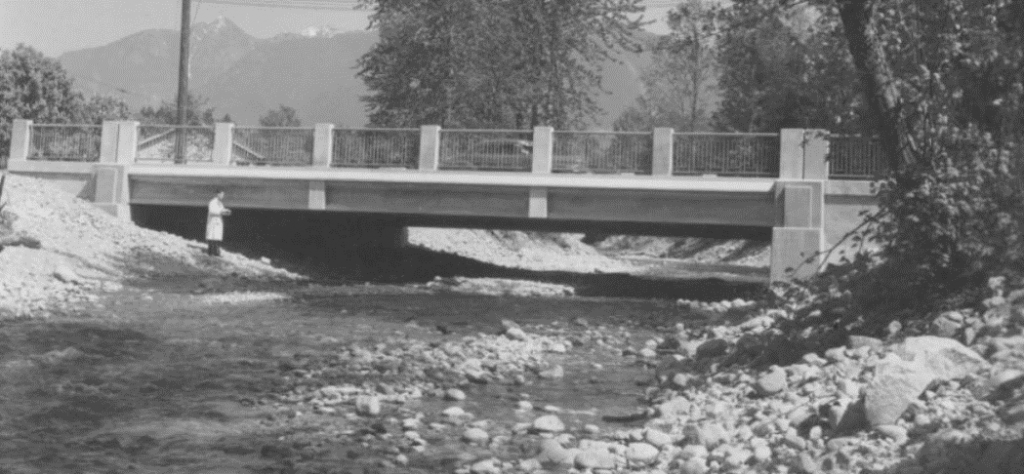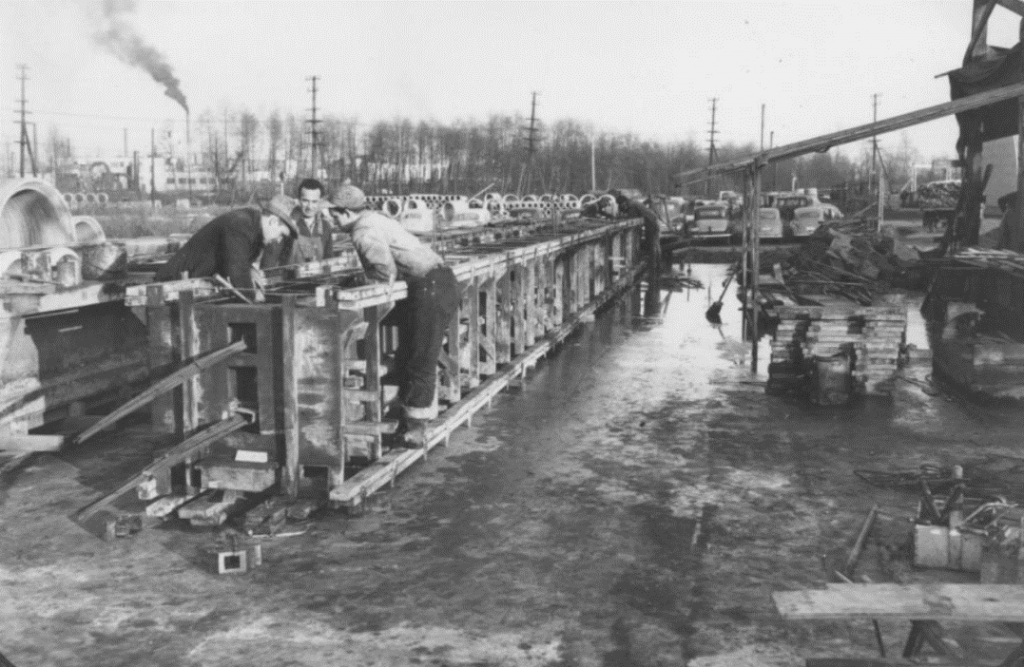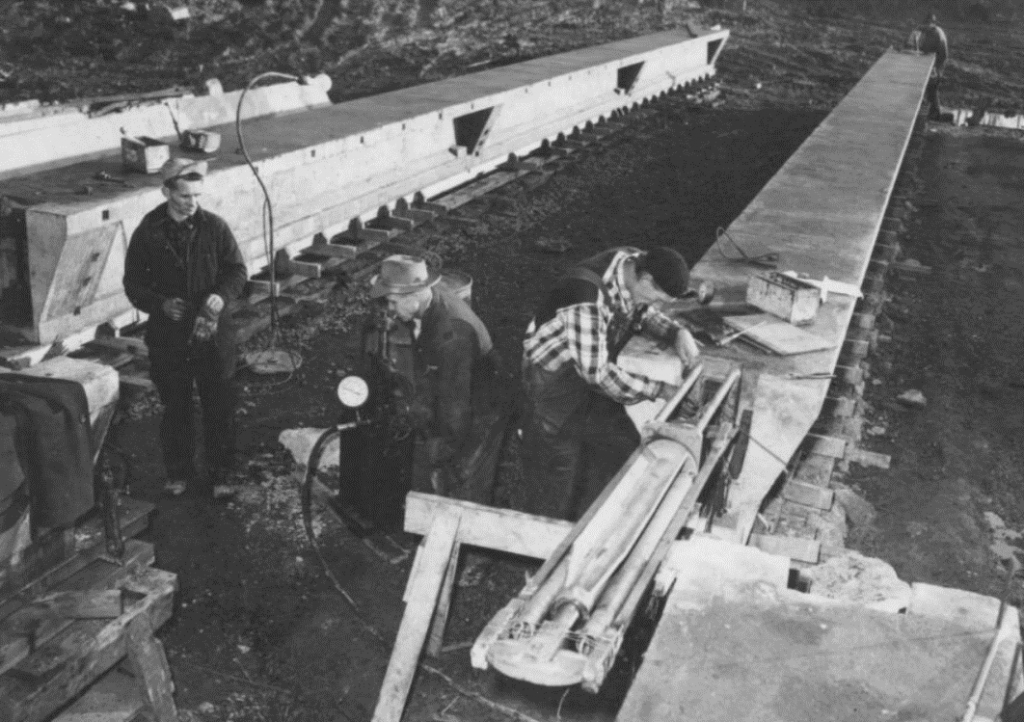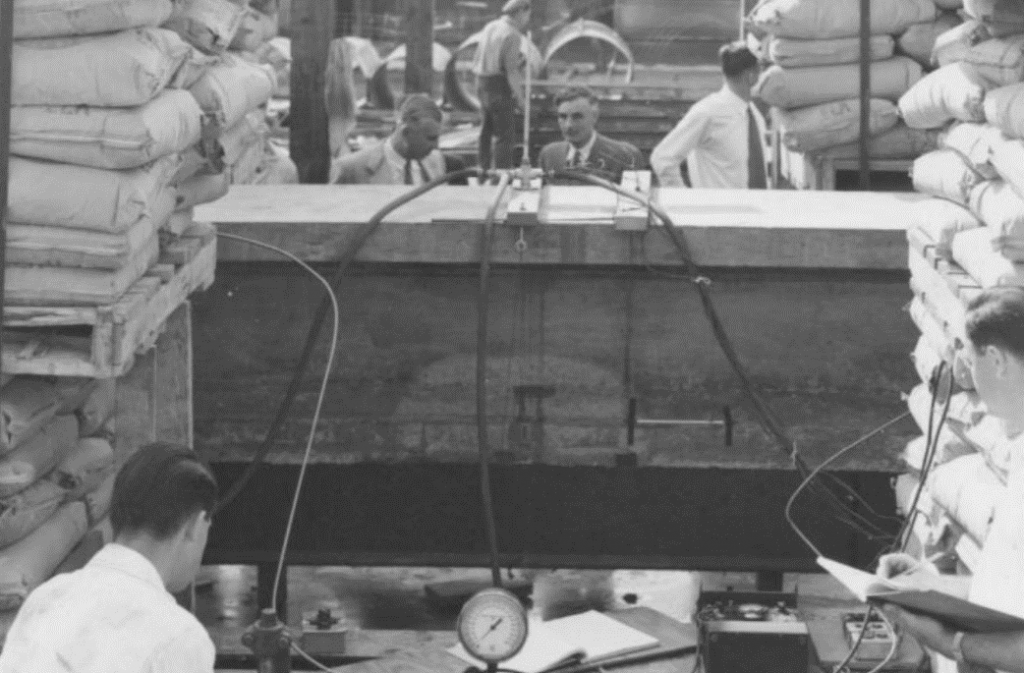

Site Location: Lat.: 49° – 19’ – 15.6” N; Long: 123° – 05’ – 39” W. (GPS: 49.320997, -123.094161). Marine Drive just east of Fell Avenue, North Vancouver. Cross northbound on the Ironworkers Memorial (Second Narrows) Bridge on Trans-Canada Highway 1 and exit on Main Street, Exit 23A. Drive west for 0.4 km and merge onto the Dollarton Highway. Continue west 5.3 km as Dollarton Highway becomes Main Street, Cotton Road, E. 3rd Street, and Marine Drive. The bridge is just before Fell Avenue.
Plaque Location: During the bridge replacement in the summer of 2020, the plaque is located upstream of the bridge on the east side of Mosquito Creek, outside the construction zone. It will be moved to a location closer to the bridge when the construction is complete at the end of the year.

Description: The Mosquito Creek Bridge, a single span of 60 ft. (18.3 m) with a width of 40 ft (12 m), was designed by A. B. (Sandy) Sanderson of the B.C. Department of Public Works in 1952. The use of precast, prestressed stringers minimized the superstructure depth and so achieved sufficient clearance above the creek without raising the profile of Marine Drive. Ramsay Murray, also of B. C. Public Works, was Substructure Designer and Resident Engineer. C. L. Van Der Brandeler served as a Prestress Design Consultant. Keith Douglass, of the B.C. Concrete Company, supervised a full-scale test to destruction of one of the stringers. The bridge was widened in 1973 and 1981. Removal and replacement of the bridge began in early 2020.




Historic Significance: The Mosquito Creek Bridge was the first prestressed concrete highway bridge in Canada. It was laterally post-tensioned in-situ to improve the live load sharing between stringers, and design of this required the solution of twenty simultaneous equations in the age before computers. A. B Sanderson deemed that each stringer should be able to resist 1.1 Dead Load + 4.4 Live Load at ultimate: AASHO later adopted a criterion very close to this. Sanderson’s participation is also significant as the annual CSCE award for excellence in Structural Engineering is named in his honour.

Plaque wording: National Historic Civil Engineering Site. CSCE. MOSQUITO CREEK BRIDGE. A tribute to the ingenuity of Canadian Bridge Engineers. The original bridge on this site which opened in 1953 was the first bridge in Canada to use prestressed concrete. ENGINEER A. B. (SANDY) SANDERSON. Owner: The City of North Vancouver. Canadian Society for Civil Engineering. 2015.
Site Historique National de Génie Civil. SCGC. MOSQUITO CREEK BRIDGE. Un homage au savoir-faire des ingénieurs de ponts canadiens. Le pont original érigé sur ce site et ouvert en 1953, fut le premier pont au Canada construit avec de béton précontraint. A.B. (SANDY) SANDERSON INGÉNIEUR. Propriétaire: Ville de North Vancouver. La société canadienne de génie civil. 2015
Plaque Unveiling Ceremony: The plaque was unveiled on site on June 1, 2017.


.
Link to Online Documentation:
Ramsay Murray, “Mosquito Creek Bridge”, Canadian Civil Engineer, 2017. (See page 12.)
Note:
- Henry R. M. (Ramsay) Murray, 1953. “Design and Construction of Mosquito Creek Bridge”. Thesis submitted in partial fulfilment of the requirements for registration in the Association of Professional Engineers in the Province of British Columbia. Victoria, B.C., 148 pp.